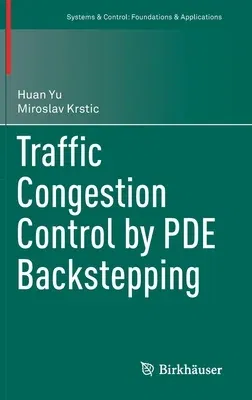This monograph explores the design of controllers that suppress
oscillations and instabilities in congested traffic flow using PDE
backstepping methods. The first part of the text is concerned with basic
backstepping control of freeway traffic using the Aw-Rascle-Zhang (ARZ)
second-order PDE model. It begins by illustrating a basic control
problem - suppressing traffic with stop-and-go oscillations downstream
of ramp metering - before turning to the more challenging case for
traffic upstream of ramp metering. The authors demonstrate how to design
state observers for the purpose of stabilization using output-feedback
control. Experimental traffic data are then used to calibrate the ARZ
model and validate the boundary observer design. Because large
uncertainties may arise in traffic models, adaptive control and
reinforcement learning methods are also explored in detail.
Part II then extends the conventional ARZ model utilized until this
point in order to address more complex traffic conditions: multi-lane
traffic, multi-class traffic, networks of freeway segments, and driver
use of routing apps. The final chapters demonstrate the use of the
Lighthill-Whitham-Richards (LWR) first-order PDE model to regulate
congestion in traffic flows and to optimize flow through a bottleneck.
In order to make the text self-contained, an introduction to the PDE
backstepping method for systems of coupled first-order hyperbolic PDEs
is included.
Traffic Congestion Control by PDE Backstepping is ideal for control
theorists working on control of systems modeled by PDEs and for traffic
engineers and applied scientists working on unsteady traffic flows. It
will also be a valuable resource for researchers interested in boundary
control of coupled systems of first-order hyperbolic PDEs.

